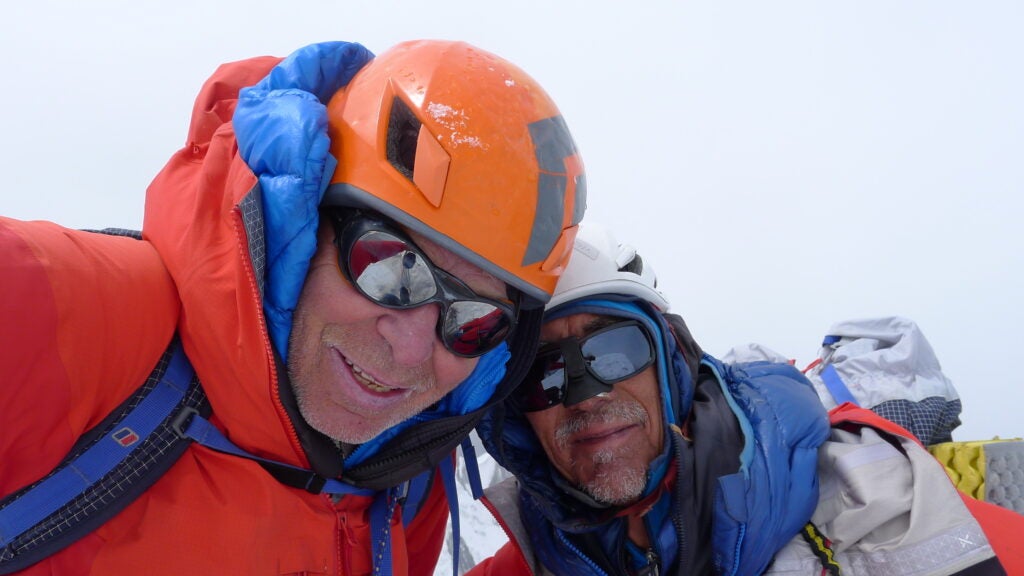No products in the cart.
Outdoor Adventure
5 Questions With Lifelong Climbing Partners Mick Fowler and Vic Saunders
Earlier this month, 68-year-old Mick Fowler and 74-year-old Victor Saunders pulled themselves onto the airy summit of Yawash Sar (20,532), becoming the first known people to stand atop the Pakistani peak. The two took a photo, frowned a bit at the mass of clouds blocking their view, and then turned around, descended the peak, and went home.
“We went to Pakistan, saw a mountain, climbed to the top, and came down,” Fowler joked. “Nothing much else to it, you know.”
Take the understatement with a grain of salt. The feat involved a weeks-long expedition into the Karakoram—the notoriously rugged range that borders the Himalaya and contains K2, the world’s second-highest peak—and seven days spent living on the side of the mountain.
On their best nights, the two slept in a tent wedged onto narrow shelves of rock and snow. On their worst, they slept sitting upright in their harnesses, with their legs dangling off the side of the cliff and tent draped over their heads for shelter. In between, they kicked steps and swung their ice tools up narrow ribbons of ice and walls of crumbling rock.
They had no map, no guidebook, and almost no route information—aside from what they’d managed to glean through their binoculars in the days before the climb.
Saunders and Fowler are used to such discomforts: both men are veteran alpinists, each with their own long resume decorated with first ascents and remote expeditions. But they’re also well past the age where most mountaineers hang up their boots.
Fowler is a cancer survivor, and Saunders is firmly in his mid seventies. So, what’s the secret? The two spoke to Outside about their recent ascent, their long friendship, and their guidelines for living a long, adventurous life.
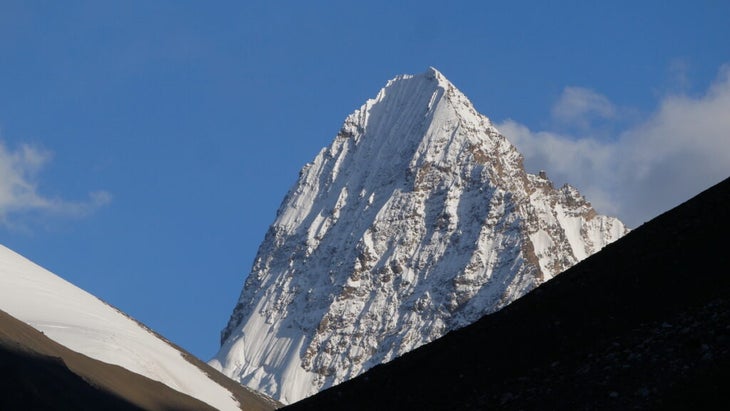
OUTSIDE: You two have been climbing partners for almost 50 years now. How did that friendship begin?
Fowler: Ha, well, when we first met, we didn’t quite get along. I described Victor as an irritating little squirt, and he described me as an arrogant twat. So, I’d say it got off to a pretty good start. But we had a week in Scotland together doing some good winter climbs in 1979 and that’s when we began to appreciate each other more and formed a friendship that has lasted nearly 50 years.
Saunders: I found I felt more comfortable with Mick on more serious ground than I felt with a lot of climbers on easier ground. I think we instilled a lot of confidence in each other from the get-go.
Fowler: Yes, and Victor is an exceptionally confident chap. It’s quite difficult to ruffle his feathers. Which is a very valuable trait in a climbing partner.
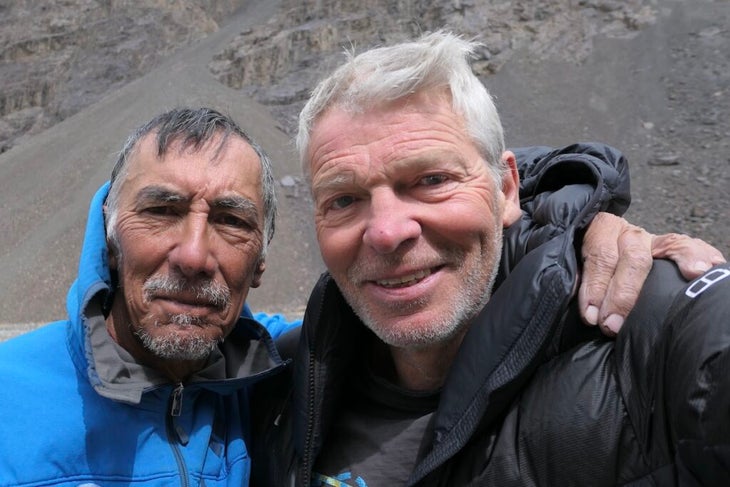
What about Yawash Sar struck you as a peak worth climbing?
Fowler: We’d probably first discussed it more than 10 years ago. There was a very small photograph of the mountain that had appeared in the American Alpine Journal taken by a Polish chap back in 2011. We both discussed it as a possible objective, but all sorts of things happened between 2011 and 2024—my health, the pandemic. All sorts of things.
Saunders: Aside from that photo, we didn’t actually see the route until we got into base camp. Until that moment, we’d seen the picture, but we didn’t know what it would really look like. We were both pleased to see that it looked shapely and steep.
Fower: We have a list of criteria before we climb a mountain. Ideally, it should have a wonderful unclimbed line that goes straight to the summit. It should be in an area neither of us have been to before, and in an area that’s culturally interesting. The climbing has got to be challenging for us but not too hard. Yawash Sar ticked a lot of the boxes.
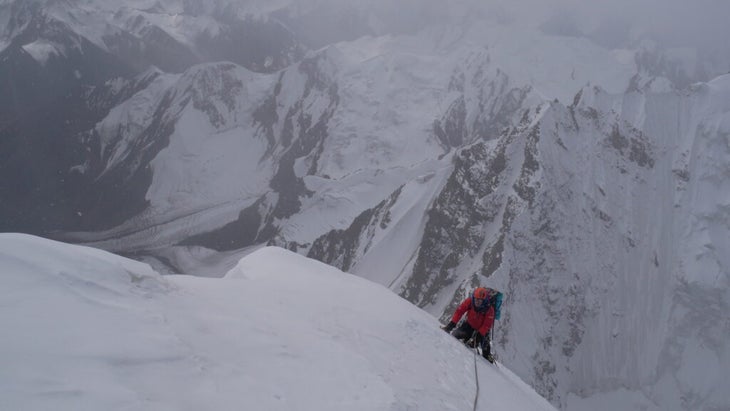
When you mention your health, you mean your brush with cancer, which I understand was pretty brutal. How has that impacted your climbing?
Fowler: Ah, well, we were about to go on a trip a few years ago, and the doctor told me I had cancer of the anus, which is not what you want, really. So I did radiotherapy and chemotherapy and eventually the removal of my anus and rectum.
It’s not recommended, cancer. All that left me with a colostomy bag. Most people would think that’s the main problem, but for me the bigger problem was that I was too thin for the surgery to be convenient. So they had to remove all the fat from my buttocks and do plastic surgery, and that left me with no padding whatsoever.
That makes things like sitting down really uncomfortable. And then with the colostomy bag, the trouble is that on these big alpine climbs, you have your harness on all day and lots of layers of clothes. So it’s not so easy to maneuver when you start to have some output into the bag. But that’s just life, you know.
Saunders: On the other hand, in a tent, he doesn’t have to go out to take a poo. So there I am, having to hang on outside the tent in terrible conditions, tied onto the mountain somehow, doing my business off the side of the cliff, and Mick just laughs at me. He says “Ah, you should get one of these things, it’s much more convenient.” We spend a lot of time laughing it. We’re really just a couple of four-year-olds at heart, you see.
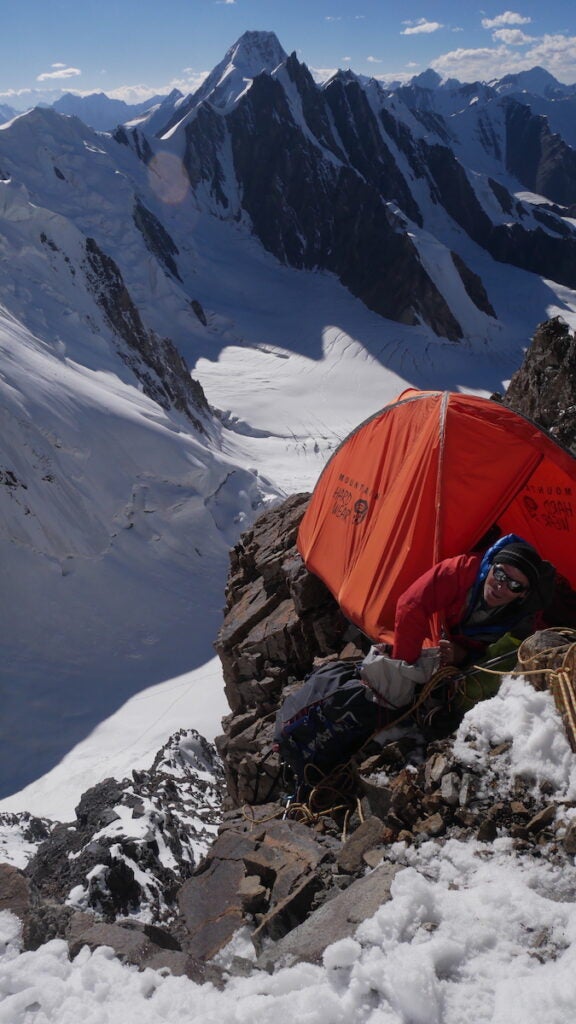
What was the biggest unexpected challenge of the climb?
Saunders: No bivouac sites. [Bivouacking means “ad-hoc camping,” typically on the side of a mountain.] There wasn’t any climbing that was outrageously difficult, but there were very few places to put a tent.
Fowler: Most of the time, we managed to arrange rocks in a vaguely flat way so we could pitch a tent over them. But we had one bivouac that was especially uncomfortable. It was a sitting bivouac, which was my worst nightmare, given the surgery I’d had. And it was very windy and the ledge we were sitting on was icy and slippery so we kept sliding off.
Saunders: We used the tent fabric without the poles and hung it over ourselves like a sack. It was a very cold night with just enough wind that, without the sack, we would have had hypothermia. I don’t think either of us slept more than a half-hour or so.
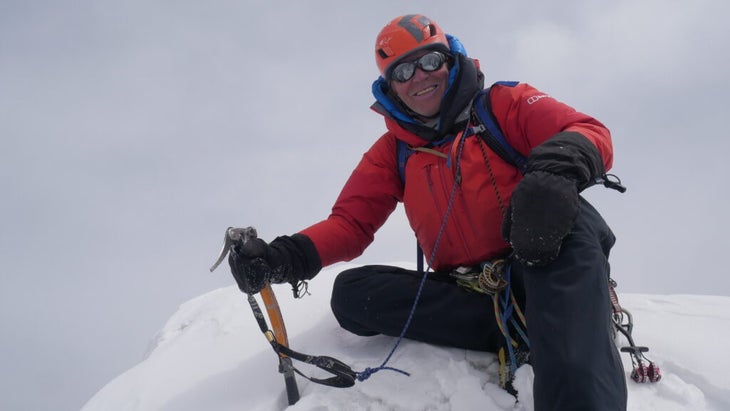
Many of the alpinists we interview for Outside are in their thirties, forties, or even younger. What’s your advice for staying in the game so long and continuing adventures late into life?
Fowler: For me, it’s been very important to make time in my life to do what I love, which is to go mountaineering and go climbing. A happy father and happy husband is one who’s had his fill of mountaineering. But within that, I’m very careful with my choice of objectives and with my choice of climbing partners.
Choose a reliable, safe climbing partner like Victor, and more than anything, carry on having a good time and living the life. I think we’ve also always chosen routes that are going to give us the most pleasure. We’re not looking to climb things just because they’re the hardest—that doesn’t come into it at all.
Saunders: You grow up, you get less arrogant with age.
Fowler: I do?
Saunders: Yes, everyone does. Even Mick. You get the hard edges knocked off of you as you go through life. And you start to prioritize enjoyment, and the people you’re climbing with.
Fowler: I would also say that I don’t think this partnership is going to end anytime soon. We already have more plans.
Editor’s Note: The interview has been edited for brevity and clarity.
Source link

